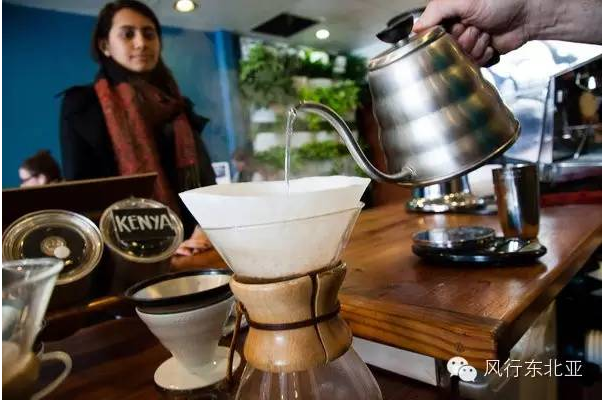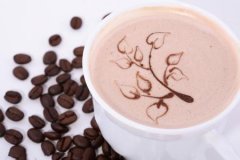Professional experience of baristas who have been in the coffee industry for 20 years

Share the professional experience of a barista who has been in the coffee industry for 20 years. I hope friends can find some directions for future development after understanding these experiences.
About coffee and raw beans
I started from importing raw coffee beans. At that time, I just felt that coffee would be popular in China and there would be a demand for coffee beans. On the basis of detailed market investigation in the previous period, I imported two containers of Colombian coffee raw beans, which was in 2001. Unexpectedly, I was the first person in China to import Colombian coffee raw beans in the whole container, and from then on it got out of hand.
After restocking, we found that it was not enough to have Colombian beans alone, and the opposite side of the needle was relatively narrow, so we began to talk about importing Brazilian coffee. In 2004, we imported two containers of Brazilian coffee. At that time, very few people imported coffee, so there were Colombian and Brazilian coffee. The scope of demand is much wider. So someone asked if we could buy some more Blue Mountain, Kona and other boutique coffee, so as to increase sales, so in 2005, we imported a container of boutique coffee from the United States, including 3 barrels of Blue Mountain, 5 bags of Kona, round beans from Tanzania, AA from Kenya and coffee from Ethiopia. Remember clearly, at that time, the Blue Mountain was 360 yuan per kilogram and Kona was 240 yuan per kilogram. In 2006, we imported Italian Sandalj blended beans, creating a full range of coffee beans sales model, until now.
The taste of coffee
However, the understanding of coffee taste is the result of years of training. The best-selling varieties of domestic imported coffee are Colombia, Brazil, Indonesia, Vietnam, Uganda, and so on. The reason is very simple, because the older generation of roasters from Taiwan used these coffees to dominate the world in the mainland. formed a flavor that is still popular until now: coffee is bitter! Have to sigh that many people fall in love with a cup of bitter ash! Of course, there are many examples of using Yunnan coffee as Colombian coffee, and to a large extent confuse people's understanding of the taste of coffee.
So, what should coffee taste like? The reason is very simple, there are no fixed rules. Italian eating habits determine that they drink strong Espresso (espresso), while the regional differences between the north and south of Italy, the type of coffee mix and the degree of roasting are also different. I once tasted a cup of 100% Robusta Espresso in Milan, which tasted very good, bitter in the mouth, but acceptable, because it was clean and had no miscellaneous taste! The so-called Espresso in China now covers all of the tongue, and within half an hour after swallowing to the throat, the bitterness still lingers!
Americans have a coffee history of more than 200 years and are the largest coffee consumer in the world, with 440 cups per capita. Before the 1980s, it was a glass of flavored water. Since the concept of boutique coffee was put forward in the 1980s, the concept of deep roasting dominated by Peets, and then the concept of shallow roasting in Seattle and Portland, coupled with the promotion of Starbucks, have gradually changed the taste of coffee.
Japan is the world's largest coffee consumer, currently in third place, reaching 600000 tons per year, with an average of 600000 cups per capita per year. The light diet also determines the taste of Japanese coffee, they like to brew coffee, clean and pure.
South Korea is a late-rising coffee consuming country. After more than 10 years of careful cultivation, it has excellent varieties and rich taste, with 330 cups per capita per year!
In contrast, in China, the per capita is no more than 5 cups a year! Fashion elites are tricked into a cup of bitter ash! The heart extremely resists swallowing it, but also praises: this cup of curry ash is good! The iced coffee I drank at Starbucks in Boston last year tasted much better than the taste of Starbucks in Beijing. It was really bullying Chinese people who didn't understand coffee. When will Chinese people taste a good cup of coffee in the real sense?
The experience of roasting coffee
Guarding a lot of raw coffee beans, with curiosity and temptation, began to play baking! That happened nine years ago. A red French SAMIAC3 kilogram electric heating baking stove, and later a domestic 20 kilogram gas roaster! Under the guidance of peers, I poured raw coffee beans into the stove and watched the light green beans in the stove with the passage of time. From white, yellow, gold, light brown, brown to dark brown, the crackling sound of taking down the beans 15 to 20 minutes later, holding slightly greasy beans, imagining a cup of rich coffee, the psychology is really beautiful!
After roasting beans and drinking coffee, I really don't know who found it. There is no historian's research. All I know is that the leaves of coffee trees have been used to make water, just like drinking tea. Coffee fruit is also used to chew; just do not know when, accidentally, who tasted the burnt coffee beans, immediately delicious rebirth! To this day, the Ethiopians still use iron plates to bake coffee! I remember that in 2003, a Wenzhou businessman named Sun Huakai wanted to import Brazilian coffee. I entrusted him to look for a coffee frying stove in Brazil. Within a few months, he asked someone to bring a cardboard box, which was very light. Open a look, a hand-fried coffee stove, put on the gas stove, you can stir-fry coffee! In fact, in countries where coffee is grown, stir-frying coffee is that simple!
When it comes to coffee consuming countries, with the change of coffee consumption concept and the progress of technology, coffee roasting has risen to the level of art and technology. Especially in the United States, more than 2000 coffee ovens, 80% are using German PROBAT,60 kilograms of the stove, with PEETS as the core of the roasters, coffee roasting into roasting art! It is fortunate that a group of crazy bakers compete with each other under the guidance of experts in the baking trade association training and competition held by SCAA every year. In PROBAT Germany, the situation is developing in another direction. Coffee roasters are defined abroad. Less than 60 kilograms are baked in stores, and more than 60 kilograms are industrial grade. There are only a handful of stoves with more than 60 kilograms in China! Last October, at the PROBAT factory in Germany, they showed us around the so-called pilot factory, coffee roasting ovens ranging from 60 kg to 4000 kg, each of which can be baked on the spot! Guests just need to bring the coffee they bought here, work with the engineer to study how to bake, get the best taste of the baking curve, take it back to the computer, directly bake it, and no longer rely on the coffee roaster!
Experience of management
At the end of 2012, we finally had our own entity-coffee season, which is an integration of coffee raw bean sales, coffee bean tasting training, coffee roasting and terminal cafes. Here, you can taste more than 40 varieties of coffee from all over the world, which are authentic in quality, pure in taste, boutique and commercial, and meet all kinds of needs. Coffee season is a comprehensive experience from beans to cups, a travel experience, an increase in knowledge, and a contribution to experience. Of course, coffee baked during the coffee season is not bitter. We use pure imported coffee!
Due to the lack of basic knowledge of coffee, consumers may accept any product and taste, the simple way is to link the quality of coffee to the price, the most expensive is the best! What I want to say here is that the most expensive is not the best, and the cheapest is indeed the worst. The price of coffee is clearly there, and it can't be as expensive as it can be. What we give to consumers can be convincing as long as it is real, but it is precisely the speculators in the industry who act as the cheapest products as the most expensive, bullying consumers, and their tongues will determine whether they continue to taste or not. this kind of improper competition is one of the main reasons for our current market situation-the coffee consumption market is very small. This situation also determines that we still have to persist in the trough of the market for a period of time, and increasing market consumption is the primary task for people in our industry!
Important Notice :
前街咖啡 FrontStreet Coffee has moved to new addredd:
FrontStreet Coffee Address: 315,Donghua East Road,GuangZhou
Tel:020 38364473
- Prev

2015 the coffee industry develops a golden era of becoming a barista.
In recent years, the development trend of boutique coffee has several obvious characteristics, the most important of which is that coffee shop owners pay more and more attention to the quality of coffee, the choice of equipment, and are fully aware of the importance of good baristas to coffee shops. Take you to understand the current situation of the coffee industry and the future development of the coffee industry, through the analysis of the operation of most cafes, foresee the future
- Next

2014 world coffee roaster champion Lai Yuquan
Lai Yuquan, 35, has been active since childhood and has a special interest and acumen in food. When he went to Yunlin to study at the Global University of Science and Technology 13 years ago, he went to work in a cafe. The charming aroma of coffee made him unable to help himself to follow him to the present. Lai Yuquan's inborn talent, coupled with acquired efforts, made Lai Yuquan learn the good skills of selecting beans, baking and brewing coffee.
Related
- What is the meaning of lactic acid fermentation with coffee bean treatment?
- How to judge the state of foam by sound?
- How does the latte pull out the unicorn pattern? Come to get for a little trick to improve the flower pull!
- Will flower pulling affect the taste of the latte?
- Do you know the history of coffee?
- The difference between honey treatment and sun washing what is raisin honey treatment?
- What kind of milk can a novice use to make coffee foam to keep the foam longer? The correct method and skills of milking tutorial sharing
- Why do washed coffee beans taste sour? Flavor characteristics of washed Coffee
- Introduction to the skill of how to practice the size and height of water injection around the circle of hand-brewed coffee
- How do beginners practice coffee flower drawing from scratch?

